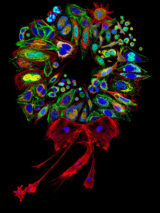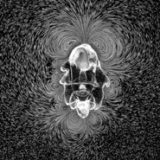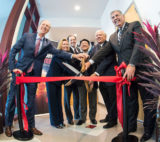
Are you on X?
Follow Nikon Instruments for microscopy news and trends, updates on new products, and information on contests and promotions.
January 12, 2017, via Nikon
This is a special year for Nikon. We are humbled to be celebrating our 100th anniversary. From cameras to lithography to microscopy, Nikon strives to illuminate our world. Please check out our special 100th anniversary site and commemorative movie detailing both our past and vision for the future.
Learn More @ Nikon
January 10, 2017, via Nikon Instruments
Are you looking for a career with a dynamic and fast-growing organization? Nikon Instruments is looking for a Bioscience Consignment & Trade Show Administrator. Key responsibilities of this position include coordinating equipment for tradeshows, workshops, and more. This is a great opportunity for non-specialists with strong organizational skills and who are available to travel to learn about optical microscopy and the medical device industry. To learn more and to apply, please visit our careers page.
Learn More @ Nikon Instruments
January 09, 2017, via Nature Scientific Reports
Researchers at Columbia University have published a new open-access article in Scientific Reports describing a non-invasive gene delivery method for optogenetic experimentation. Lipid microbubble-encapsulated adeno-associated virus (carrying Channelrhodopsin-2 gene) in the blood is introduced into the brain by using transcranial-focused ultrasound (FUS) to transiently breach the blood-brain barrier. Imaging was performed with a Nikon laser scanning confocal microscope.
Learn More @ Nature Scientific Reports
January 06, 2017, via Cincinnati Children's Hospital Medical Center
Check out this report about researchers at Cincinnati Children's Hospital Medical Center who successfully created stomach fundus tissue in the lab using human pluripotent stem cells. Their research, published in Nature, demonstrated that the tissue was able to produce stomach acid and digestive enzymes, indicating high potential for use as a model system. Imaging was performed using a Nikon A1Rsi resonant-scanning confocal microscope with spectral detector.
Learn More @ Cincinnati Children's Hospital Medical Center
January 05, 2017, via PLOS
Researchers at the UC San Diego and University of Groningen have published an open-access article in PLOS Biology that provides proof for a mechanism of collective resistance in microbial communities via intracellular antibiotic deactivation. Deactivation of the antibiotic chloramphenicol by resistant bacteria dropped the overall concentration in the growth medium to the point that non-resistant bacteria began to proliferate and even outcompete resistant cells. Live cell imaging was performed with a Nikon Ti-E inverted research microscope.
Learn More @ PLOS
January 04, 2017, via Nikon Imaging Center at Harvard Medical School
We are very excited to announce that the Nikon Imaging Center at Harvard Medical School (NIC@HMS) is seeking candidates for a post-doctoral training fellowship in advanced optical microscopy techniques and core facility management. For more information and to apply, please click on the link.
Learn More @ Nikon Imaging Center at Harvard Medical School
January 03, 2017, via Royal Microscopical Society
We’re excited about the upcoming 2017 Light Microscopy Facility Managers Meeting in York, UK on January 5th and 6th. The meeting, organized by the Royal Microscopical Society, will focus on a number of topics, including the logistics of running a core facility, as well as the latest technological advances and imaging techniques. We hope to see you there!
Learn More @ Royal Microscopical Society
December 29, 2016, via Journal of Cell Biology
Researchers at Northwestern University Feinberg School of Medicine have demonstrated that the microRNA-103/107 family regulates macropinocytosis and end-stage autophagy in the stem cell-enriched limbal epithelium of the eye. Their research, published in the Journal of Cell Biology, found that loss of microRNA-103/107 results in dysregulation of macropinocytosis and formation of large vacuoles. In collaboration with Josh Rappoport of the Nikon Imaging Center at Northwestern, vacuole morphology was characterized using the Nikon N-SIM super-resolution system.
Learn More @ Journal of Cell Biology
December 28, 2016, via Scientific Reports
New open-access research in Scientific Reports details a 3D microwell array system for culturing human tumor cells infected with Kaposi’s sarcoma-associated herpesvirus (KSHV). Cells grown in 3D had higher KSHV genome copy numbers than those grown in 2D control (measured by fluorescence microscopy) and higher rates of lytic reactivation, providing a more physiologically relevant model for infection. Live cell imaging was performed using a Nikon Ti-U inverted fluorescence microscope.
Learn More @ Scientific Reports
December 21, 2016, via Nikon Small World

We'd like to get everybody in the holiday spirit by sharing this image from our 2011 Nikon Small World Photomicrography Competition, featuring a collage of fluorescently stained mammalian cells. Photo credit: Dr. Donna Stolz, University of Pittsburgh.
Learn More @ Nikon Small World
December 20, 2016, via Neuron
Please check out this wonderful open-access article by Rae Nishi, Director of Education at the Marine Biological Laboratory (MBL) in Woods Hole, MA. Dr. Nishi and colleagues discuss the profound impact of the MBL’s research training courses in transforming today’s students into tomorrow’s leading researchers through an intense and collaborative blend of hands-on training and the highest-level instruction. We are very proud to be long-time supporters of the MBL and their research training courses, sharing the common goal of advancing science.
Learn More @ Neuron
December 19, 2016, via NPR
Most of us have probably had an overdue library book, but likely not 122 years overdue. This NPR article covers how the headmaster at Hereford Cathedral School received a package containing a copy of Walter Benjamin Carpenter’s The Microscope and Its Revelations that was originally checked out of the school library in 1894. Fortunately the library does not charge late fees.
Learn More @ NPR
December 15, 2016, via Science
Here’s a news article from Science about recent research using stem cell genes to rejuvenate mice exhibiting symptoms of Hutchinson-Guilford Progeria Syndrome – a genetic disorder resulting in signs of premature aging. Activation of just four genes helped ameliorate several symptoms of old age – helping to thicken skin, reduce deterioration of the kidney and spleen, and improve cardiac function.
Learn More @ Science
December 14, 2016, via Nikon Small World

Nikon Instruments Inc. today unveiled the winners of the sixth annual Nikon Small World in Motion Photomicrography Competition, awarding First Place to William Gilpin of Stanford University for his video depicting an eight-week-old starfish larva churning the water around its body as it searches for food. Gilpin and his colleagues studied the starfish larva as a model system for how physics shapes evolution, and were surprised and intrigued that a common organism like a starfish could create such an intricate and unexpected pattern in the water.
Learn More @ Nikon Small World
December 13, 2016, via Nikon Imaging Center at Fondazione Istituto Italiano di Tecnologia
We hope everyone enjoyed the first day of the Practical Workshop on Advanced Microscopy held at the Nikon Imaging Center at Istituto Italiano Di Tecnologia. Attendees get hands-on experience with many cutting edge imaging technologies, including Nikon’s A1 confocal with spectral detection, N-SIM, N-STORM, and more. The workshop runs through Friday December 16th.
Learn More @ Nikon Imaging Center at Fondazione Istituto Italiano di Tecnologia
December 12, 2016, via Nature Microbiology
Check out this new article in Nature Microbiology detailing the structure of archaellum using cryo electron microscopy. Archaellum are analogous to bacterial flagella (driving cell motility), but found in Archaea. Researchers at UCLA used CryoEM to image archaellum at 3.4 angstrom resolution, finding significant structural differences compared to flagella.
Learn More @ Nature Microbiology
December 09, 2016, via Nature Scientific Reports
Here’s an open-access article in Scientific Reports detailing a new method for co-culture of human induced pluripotent stem cell (iPSC) derived neurons and glial cells in a 96-well microfluidic platform designed for high throughput drug screening and personalized medicine selection. Cells are grown in a 3D extracellular matrix network so as to best mimic in vivo conditions.
Learn More @ Nature Scientific Reports
December 02, 2016, via Florida Atlantic Universiry

Nikon is very excited that Florida Atlantic University at Jupiter Brain Institute is now home to the latest Nikon Center of Excellence, one of seven around the world. According to Randy Blakely, executive director of FAU's Brain Institute, "The establishment of a Nikon Center of Excellence at FAU brings a new level of imaging capability to our scientists and trainees, and links our community to prominent cell imaging centers at premier academic institutions and research centers around the world."
Learn More @ Florida Atlantic Universiry
December 01, 2016, via Nikon Instruments
We would like to invite The American Society for Cell Biology meeting attendees to join us for a Tech Talk by Dr. Steven Finkbeiner – “Using the Past to Predict the Future: Applications of High Throughput Longitudinal Single Cell Analysis to Discovery”. Dr. Finkbeiner will discuss the utility of Robotic Microscopy for longitudinal single cell imaging and analysis and how it can be used to produce quantitative and predictive models of biology. The Tech Talk will be held Tuesday December 6th in Theater 1, Room 102 of the Moscone Center from 12:00-12:45 PM.
Learn More @ Nikon Instruments
November 30, 2016, via Nature Chemical Biology
Researchers have developed fluorescent cell-permeable “super-binding” peptides for specific labeling of gephyrin - a marker of the inhibitory postsynaptic density - demonstrating conventional and super-resolution imaging of inhibitory postsynaptic sites for the first time. These peptides also act as modulators of inhibitory neurotransmission. The authors hope to expand the desigin and use of fluorescent “super-binding” peptides to other cellular targets.
Learn More @ Nature Chemical Biology

















